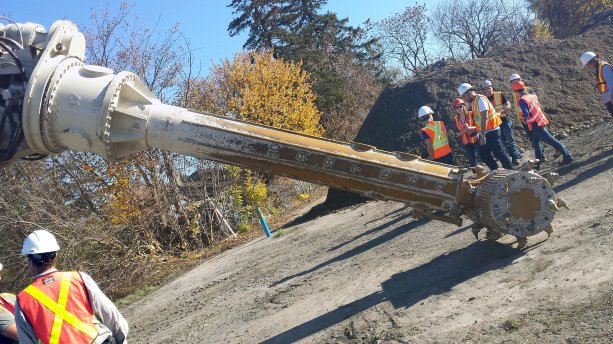Six acres of property near downtown Brantford, Ont. have come a long way from a time when lighting and small appliance manufacturers plus a roofing shingle producer called it home.
Known as the Sydenham Pearl brownfield site, the property is nearing the last stage of remediation that will see the former industrial lands transformed into parkland.
It has been a long haul for the property that went from profitable manufacturing grounds in the mid-20th century to an industrial wasteland by the 1980s.
Last year it was the recipient of a Brownie Award by the Canadian Brownfields Network (CBN) for the city’s remediation efforts. Today, Brantford is focused on monitoring, future risk management and maintenance plans of the site.
“It is an important step because it will ultimately frame future redevelopment options,” said Nicole Wilmot, manager of policy planning with Brantford’s planning department, during the CBN’s 7th annual conference in Toronto.
The status of Sydenham Pearl and another Brownie winner — a waterfront development in Stockholm, Sweden — were the topic of a seminar at the conference.
By creating parkland near the core, the City of Brantford sees the site as an attraction for other redevelopments nearby, Wilmot told delegates.
She said her department hopes to present redevelopment options to city council this fall, focusing on residential and parkland.
“Then we hope to go back out to the community to refine those concepts,” she said.
Wilmot said a major challenge to remediating the site was its location.
“We were essentially working in people’s backyards,” said Wilmot, adding that about a dozen residents had encroached on the property using parts of the site as if it were their own after years of the lands sitting vacant.
It took extensive communication with residents to clear the air about the impact of encroachments before the city reclaimed the land and moved ahead with remediation, Wilmot said.
She told delegates that after a major fire in 2002 the city was ordered by the medical officer of health to demolish all the vacant industrial buildings and a few years later a plan was developed to transform the property into residential parkland.
In 2012 a $4.6-million remediation plan was implemented with CH2M managing an environmental design and remediation program. Last year the city retained Milestone Environmental Contracting Inc. for environmental remediation and soil cap construction, said Ed Taves, project manager, CH2M.
By comparison, Hammarby, Stockholm, a Brownie award winner in 2008, has become a model of a sustainable waterfront neighbourhood, with 11,000 dwelling units. That’s a long way from its brownfield days decades ago.
One the conflicts in the development process was whether to design the community based on a low-energy or a low-carbon footprint, explained David Webber, the vice-president of sustainability with WSP, which was a consultant to the Swedish development.
“In Sweden they said, ‘We are going to be low carbon’ and they regulated it. In Canada we’re letting the market figure it out and it is going to be a bit messy,” he said.
Some utility companies and agencies will struggle with how to achieve that objective, Webber added.
While Sweden has been a global leader in carbon reduction, Canada is catching up, largely based on the “number of incredible projects from Waterfront Toronto…” and some others in Canada.
“I think we have a chance in the next decade to be real leaders in brownfield renewal and sustainable development,” he stated.
“The issue of utilities and how we broaden the conversation across those boundaries of developers, cities and utilities I think will allow us to be global leaders.”











Recent Comments
comments for this post are closed